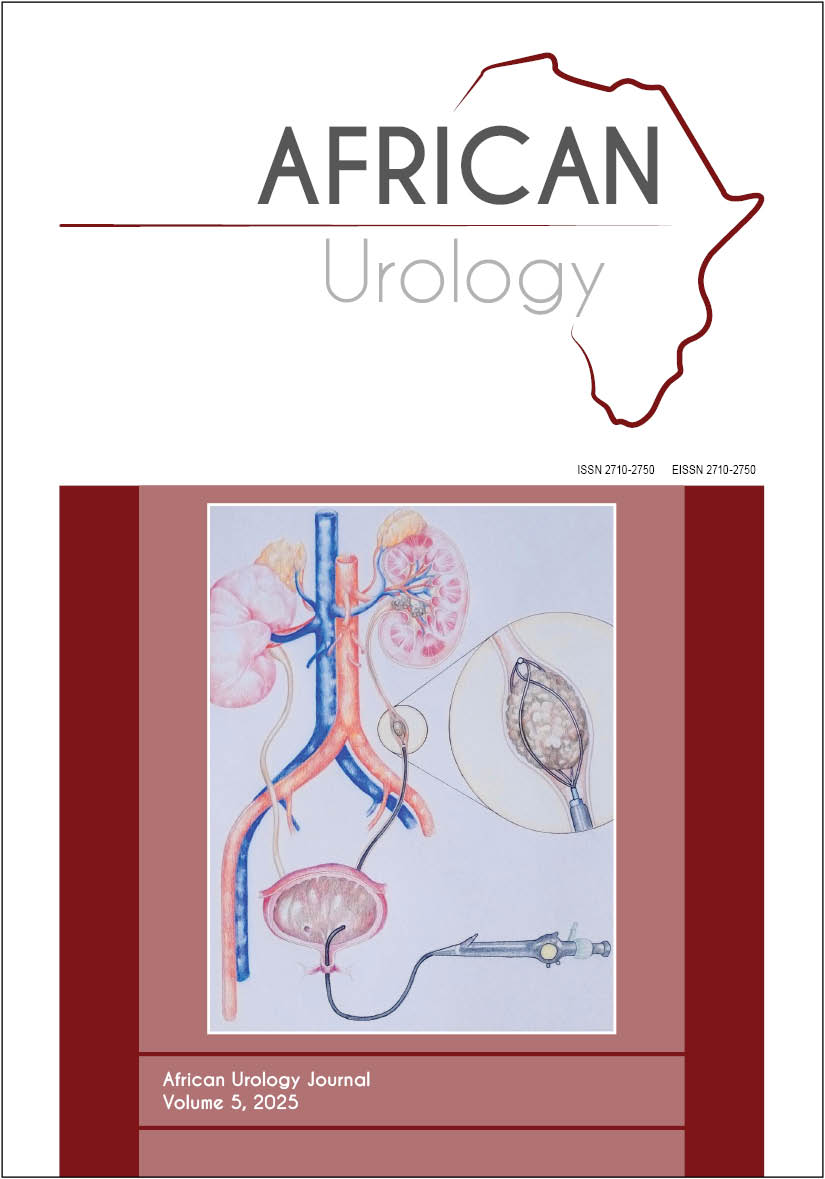The parameters of predicting kidney function recovery after obstructive uropathy management: a case–control study
Main Article Content
Abstract
Introduction: Hydronephrosis is the renal pelvis dilation due to urinary tract obstruction resulting from physiological or pathological factors. Delayed treatment leads to permanent kidney damage, and kidney function recovery does not always occur after treatment. Therefore, determining the parameters of kidney function recovery after hydronephrosis treatment is crucial.
Methods: A retrospective case–control study to evaluate the parameters that predict kidney function recovery after obstructive uropathy management in adult patients at Prof. Dr. R. D. Kandou General Hospital, Manado. Data were collected from medical records and analysed using descriptive, bivariate, and multivariate analyses to evaluate factors influencing kidney function recovery. Receiver operating characteristic (ROC) curve analysis was used to determine the optimal cut-off value for each parameter, along with cross validation and statistical power calculations.
Results: This study involved 72 patients with obstructive uropathy. Kidney function improvement was observed in 63.9% of the patients. Most patients (61.1%) did not undergo haemodialysis (HD). The Kruskal–Wallis test (p < 0.001) showed significant differences in outcomes across HD status groups’ prognoses. The ROC analysis revealed the optimal cut-off values for urea (93.0 mg/dl, 5.2 mmol/L), creatinine (33.9 mg/dl, 1.88 mmol/L), and haemoglobin (9.4 g/dl, 5.83 mmol/L). Urea, creatinine, and haemoglobin also showed good sensitivity and specificity in predicting kidney recovery (urea: 77.78% sensitivity and 72.22% specificity, creatinine: 63.89% sensitivity and 94.44% specificity, haemoglobin: 75% sensitivity and 61.11% specificity).
Conclusion: This study demonstrated that HD status and laboratory parameters, including urea, creatinine, and haemoglobin, play important roles in predicting kidney function recovery after obstructive uropathy management.
Article Details

This work is licensed under a Creative Commons Attribution-NonCommercial 4.0 International License.
